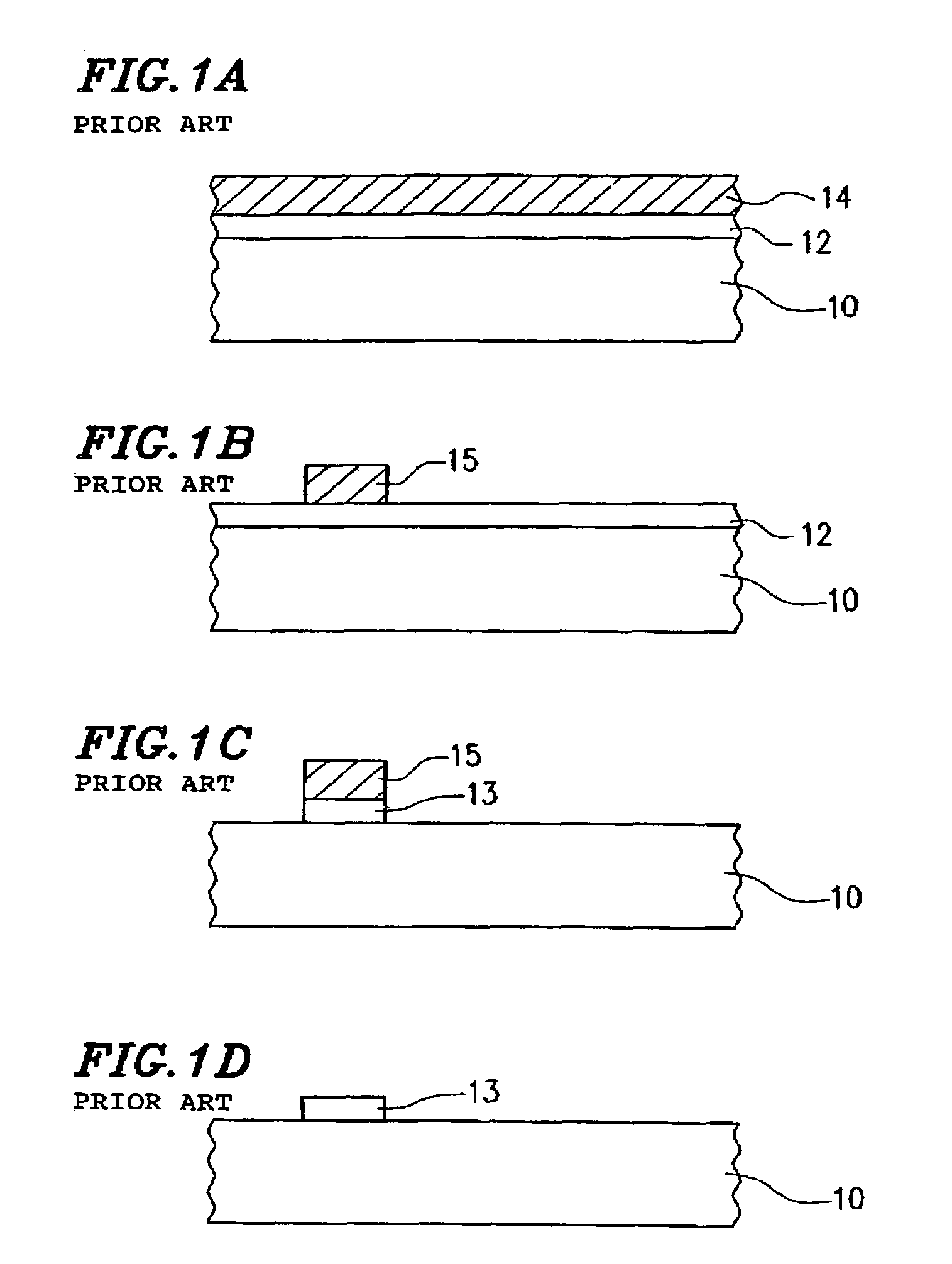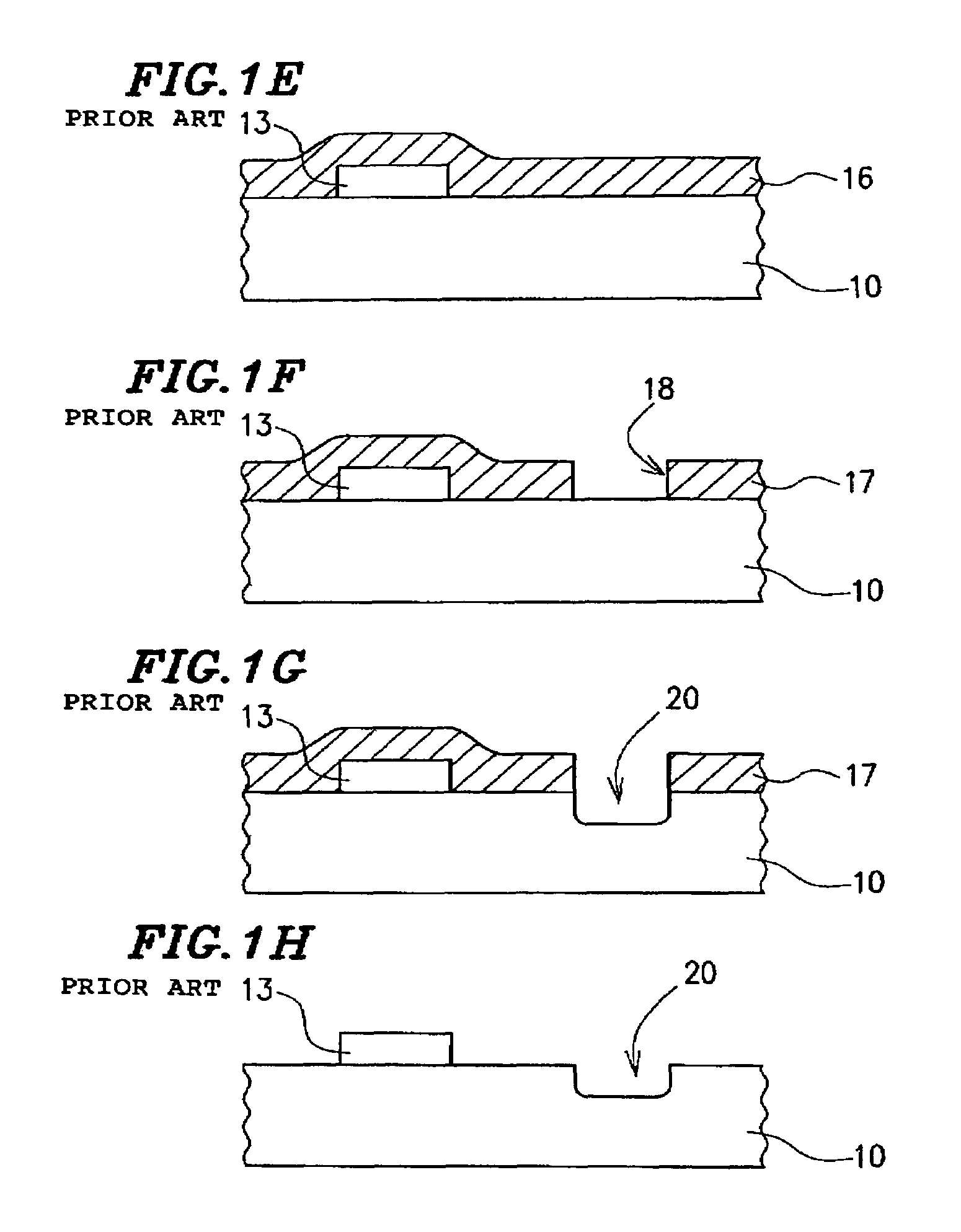Method for producing alignment mark
- Summary
- Abstract
- Description
- Claims
- Application Information
AI Technical Summary
Benefits of technology
Problems solved by technology
Method used
Image
Examples
embodiment 1
Preferred Embodiment 1
[0049]Description is made below of a first preferred embodiment of a method for producing an alignment mark according to the present invention with reference to the drawings. In the present preferred embodiment, identification information is engraved on a Al2O3—TiC based ceramic wafer preferably including two types of composite materials, namely, Al2O3 and TiC.
[0050]In the first place, as FIG. 3A shows, after a first photoresist layer 32 having a thickness of the order of about 0.1 μtm to about 10 μm has been formed on the ceramic substrate 30, a prebake process is performed for the purpose of evaporating the solvent in the resist material. The temperature and duration of the prebake process are appropriately set according to the type of the photoresist. Then, as FIG. 3B shows, the photoresist layer 32 is exposed and developed, and thus an alignment mark 33 is formed from the first photoresist layer 32.
[0051]In the present preferred embodiment, after the substr...
embodiment 2
Preferred Embodiment 2
[0060]Description is made below of a second preferred embodiment of a method for producing an alignment mark according to the present invention with reference to FIG. 4.
[0061]In the first place, according to the method similar to that used in the first preferred embodiment, an alignment mark 33 having a thickness of about 0.1 μm to about 10 μm is formed on a substrate 30 (FIG. 4A). Specifically, after the substrate has been coated with a negative photoresist by a spin coat method or other suitable process, light is irradiated to the prescribed portion on the negative photoresist layer through a photomask defining the pattern for the alignment mark. The light irradiated portion (exposed portion) on the photoresist layer becomes insoluble in a developer owing to the photo-crosslinking reaction. By dissolving the unexposed portion in the developer in the development process, the alignment mark 33 can be formed which is made from the exposed portion of the photores...
PUM
 Login to view more
Login to view more Abstract
Description
Claims
Application Information
 Login to view more
Login to view more - R&D Engineer
- R&D Manager
- IP Professional
- Industry Leading Data Capabilities
- Powerful AI technology
- Patent DNA Extraction
Browse by: Latest US Patents, China's latest patents, Technical Efficacy Thesaurus, Application Domain, Technology Topic.
© 2024 PatSnap. All rights reserved.Legal|Privacy policy|Modern Slavery Act Transparency Statement|Sitemap



